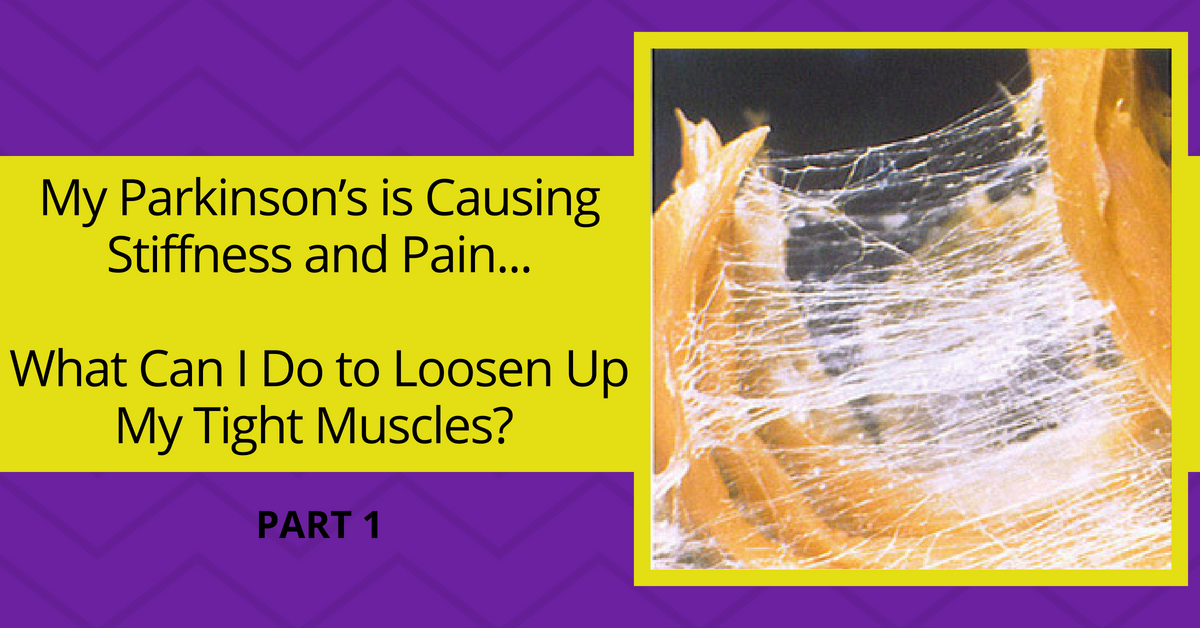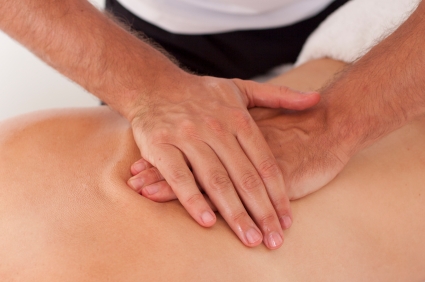
Fascia is a thin sheath of fibrous tissue which forms one continuous structure in the body. It has an appearance similar to a spider’s web, and it densely covers and penetrates every muscle, bone, nerve, artery, vein, internal organ, the brain, and spinal cord. This means the entire body is connected to every other part by the fascia. Fascia plays an important role in the support and function of our bodies.
In the normal healthy state, the fascia is relaxed and wavy in configuration, with the ability to stretch and move without restriction. With trauma, age, and certainly Parkinson’s disease, the fascia loses its pliability and becomes tight, restricted, and a source of tension to the rest of the body. Myofascial restrictions can produce tensile pressures of approximately 2,000 pounds per square inch on pain sensitive structures that do not show up in x-rays, myelograms, CAT scans, electromyography, etc.
If one joint is not working efficiently, then the other joints will compensate. This leads to muscle imbalances, tissue overload, fatigue, and injuries. If your muscles are tight it restricts your range of motion, and your other muscles and joints must take over. This sends the wrong signals to the Central Nervous System (CNS). We have all seen it in people with Parkinson’s: tight hamstrings, tight chest, poor posture, and what I call “Tucky Butt”, which causes back pain and knee pain.
Fascia can become “tangled” and form adhesions. This happens to people with PD because of the neuromuscular misfiring, altered movement patterns, and dry tissue (dehydration) that they chronically experience.
In this and upcoming blog posts, I will be introducing several techniques that are very effective in treating chronic tightness in the tissues.
Myofascial Release is an alternative medicine therapy used to treat skeletal muscle immobility and pain. It relaxes contracted muscles, improves blood and lymphatic circulation, and stimulates the stretch reflex in muscles. Myofascial Release is a hands-on technique that involves applying gentle, sustained pressure into fascial connective tissue restrictions to eliminate pain and restore mobility.
According to National Academy of Sports Medicine (NASM), here are some benefits of Myofascial Release:
- Corrects muscle imbalances and helps our muscles relax. This improves muscle restrictions when we exercise and gives positive feedback to our CNS.
- Improves joint range of motion. It basically breaks down the knots (which restrict our range of motion) in our muscles, so we can move correctly. This helps to prevent falls and injuries.
- Relieves muscle soreness, joint stress, and speeds up recovery due to better blood flow and circulation to the body.
- Improves neuromuscular efficiency due to better oxygenation in our muscles.
- Relaxes our muscles through the activation of sensory receptors connecting our muscle fibers to our tendons.
How do I get Myofascial Release?

Research a Licensed Massage Therapist LMT, Physical Therapist or Chiropractor in your area who specializes in this type of therapy. It’s quite common now because this therapy is so effective. If you are not comfortable being adjusted by a chiropractor, you can ask for just the myofascial release.
Getting Myofascial Release is well worth the investment. If you don’t take care of those tight painful areas now, they will get worse and could result in an injury that could prevent you from exercising (which you can’t afford to miss!).